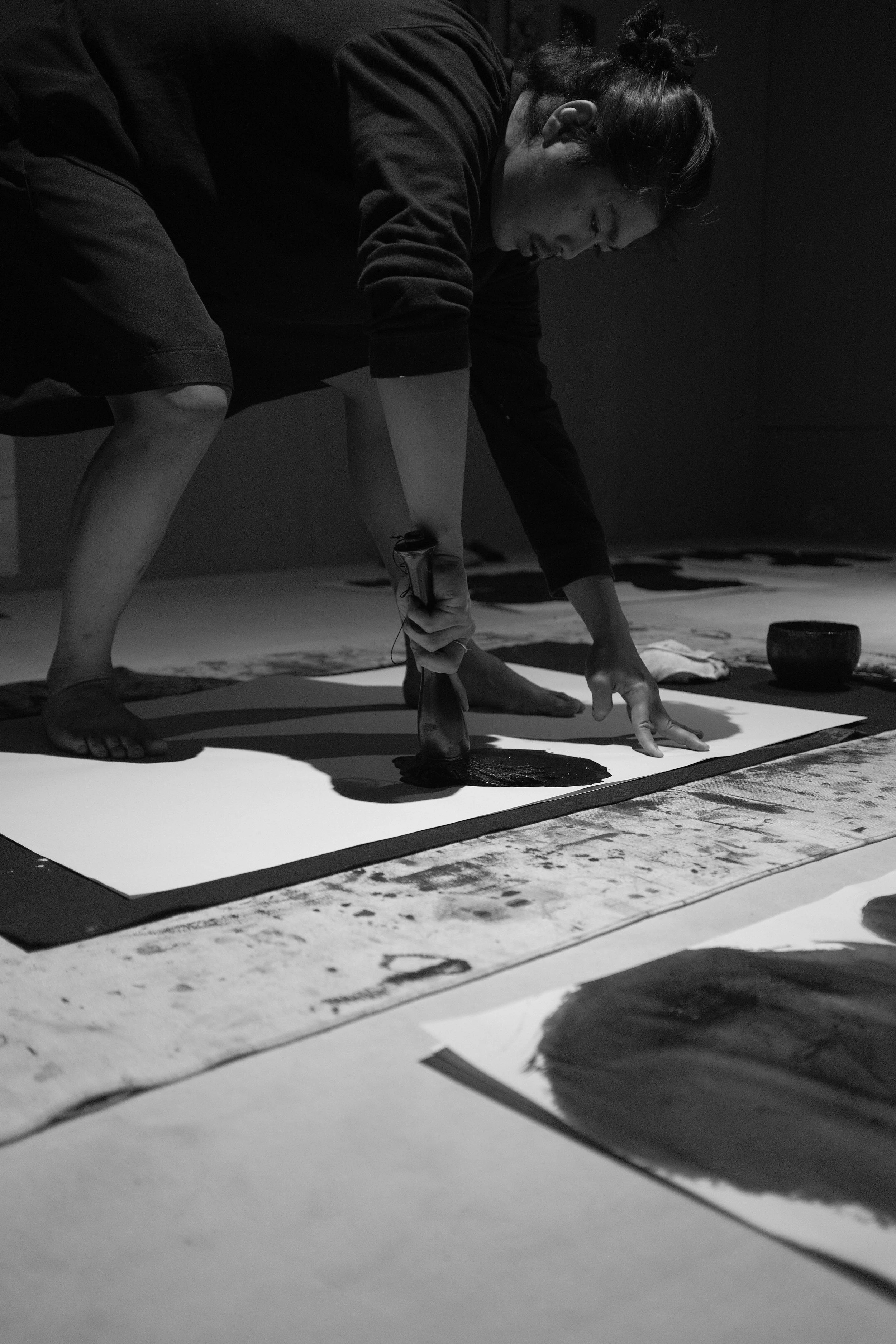JB Blunk
Working primarily in wood and ceramic, JB Blunk (1926–2002) developed a distinct style that drew upon the Japanese principle of directness as well as an unfaltering reverence for the qualities of natural materials. Taking archetypal forms and translating them instinctively through raw, salvaged materials, Blunk produced a body of work that represents an innate expression of, and conversation with, nature.
VIEW WORKS
Daichiro Shinjo
Shinjo began practicing shodō, traditional Japanese calligraphy, at the age of four, carrying forward a lineage of Zen and Okinawan spiritual learning through his grandfather. His forms—organic, rounded, and bold—are shaped by direct, intuitive gestures. Like Blunk, he honors ancient traditional forms while creating space for new expressions, each mark a reflection of its time. During his stay at the Blunk House, Shinjo produced a series of new works on paper. Though appearing as singular, fluid gestures, each piece is the result of a slow, meditative process.
VIEW WORKS
Rick Yoshimoto
After moving to California from Hawaii as a young man, Rick Yoshimoto started working with JB Blunk in 1978 and lived in Inverness for almost forty years. It was during the first year of working with Blunk that he learned to use a chainsaw and began carving wood. Like Blunk’s, Yoshimoto’s practice is an amalgamation of craft, art, and design, and his indifference to these categories has imbued his work with freedom and humor.
VIEW WORKS
Martino Gamper
London-based designer Martino Gamper’s practice includes interiors, design objects, and textiles of all scales and types. One of his foundational projects, ‘100 Chairs in 100 Days’, involved collecting discarded chairs on the streets of London and making one new chair each day from the old. Like Blunk’s, his work is playful, intuitive, and resourceful. Gamper used salvaged wood from local sawyer Evan Shively to produce cutting boards, wood-framed mirrors, and a series of benches for an exhibition at Blunk Space in 2023.
VIEW WORKS
Norma Ashby
Norma Ashby (1935-2016) was a potter and artist who lived in Inverness. She and her husband Gordon were close friends of JB Blunk, who often traded ceramics with Norma. She ran a pottery and flower shop in Inverness Park in the 1980s and 90s.
VIEW WORKS
Alana Burns
Expanding from a poetry practice, Alana Burns turned to sculptural and wearable works while maintaining a soft focus on nostalgia and time. Burns sources objects of nature and of memory for her work from anywhere, but is especially attuned to the delicacy and strength of shells, fossils, and minerals from the seaside. Back in Mexico City, where she lives and works, she assembles each object with these vestiges of archaeology and marine life together with fantastical shapes in silver, bronze, and gold. While staying at the Blunk House, Burns created shell-based tableware responding to Blunk ceramics and bowls. She also had access to Blunk’s personal collection of found objects, remnants of his own fascinations, which she thoughtfully incorporated into earrings and rings.
VIEW WORKS
RIO KOBAYASHI
Rio Kobayashi, who has both Austrian and Japanese ancestry, approaches his aesthetic influences and materials with reverent humor. Raised in Japan and now based in London, he crafts functional objects that are never too far from sculptures, embedded with joyful humor. During his stay at the Blunk House in 2024, Kobayashi sourced salvaged local redwood and hand-built a collection of custom furniture that bridges the gap between large-scale sculptures and functional objects.







